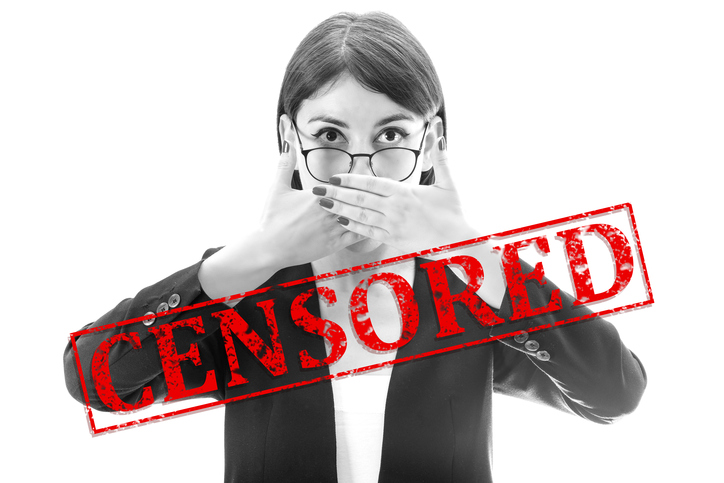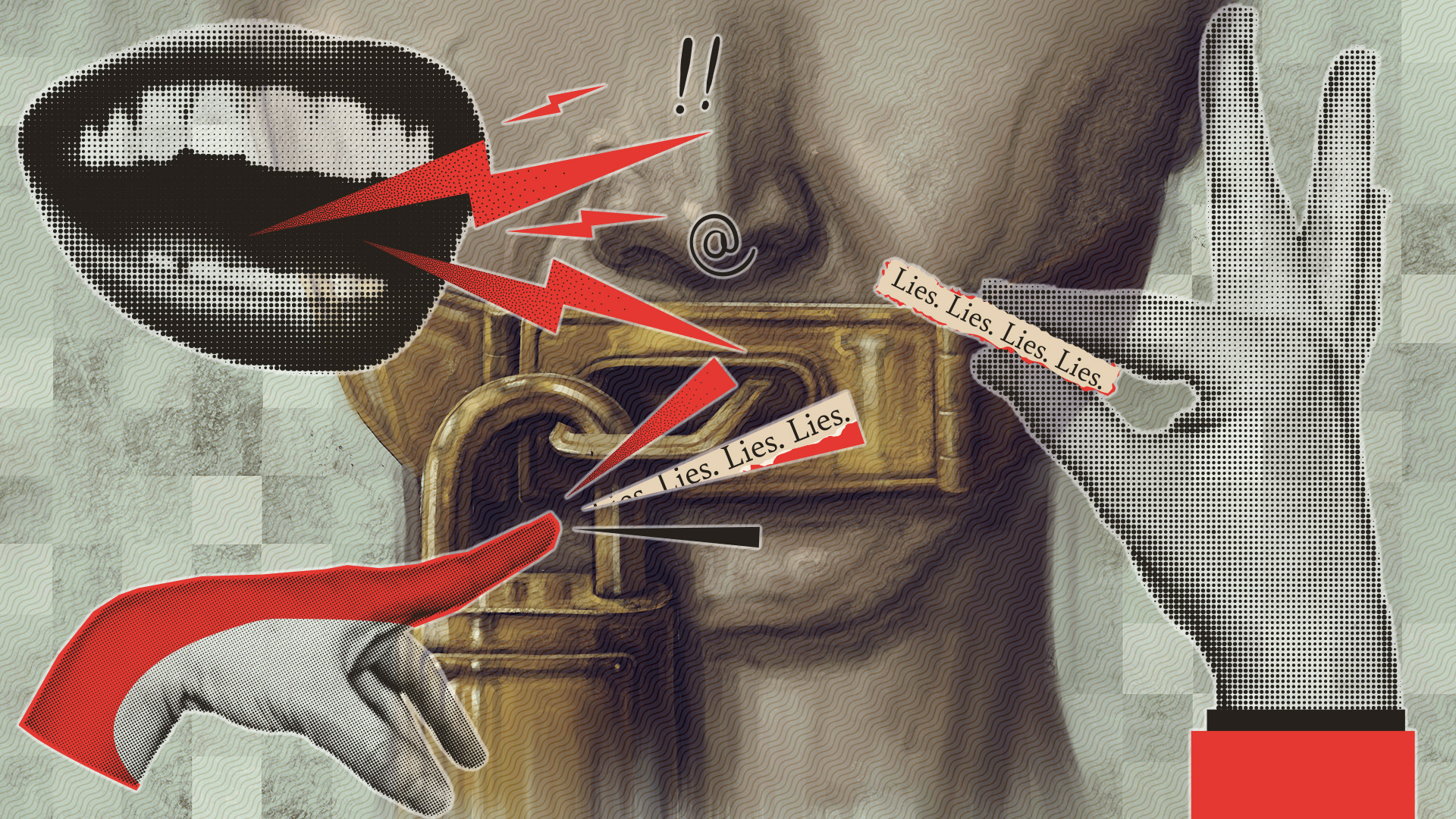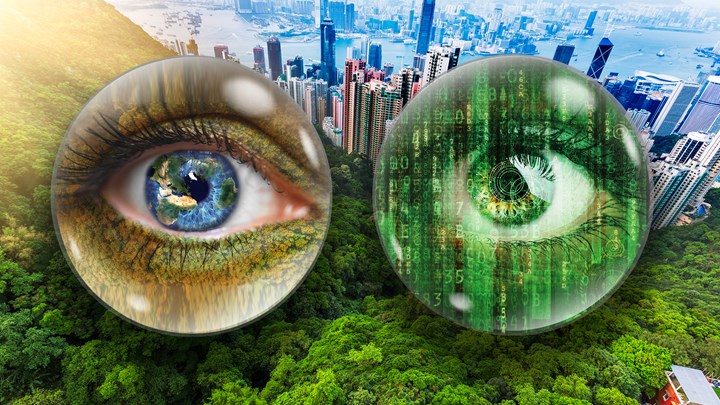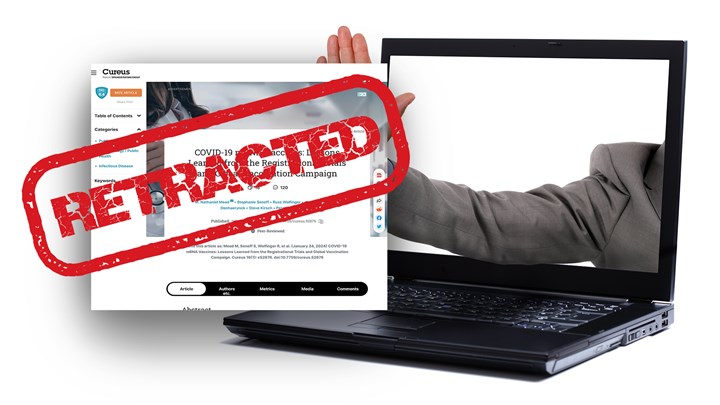Content Sections
By Rob Verkerk PhD, executive & scientific director, ANH-Intl and ANH-USA
The Topline
- Trust in governments, mainstream health authorities and mainstream science is at all time low, leading to increasingly desperate attempts to rebuild that trust, including at this month's World Economic Forum Annual Meeting in Davos
- Ever more information is being branded as mis-, dis- or malinformation (MDM) as authorities clamp down on those who dare to challenge corporate-determined 'truths'. Appointed governmental, academic and media 'authorities' are not only the key arbiters of MDM, they are also frequent disseminators of MDM
- The past four years have seen a huge crackdown on scientific dissent, originally the driving force behind scientific discovery and innovation, in an attempt to control the narrative and bend our will, and beliefs, to official narratives
- Rapidly expanding AI technology is not only being used detect and marginalise so-called misinformation, it is now also widely regarded (including by WEF) as a key source, presenting major societal risks
- Raising awareness of the way information is being controlled is essential, so we can counter the tightening of the information reins, find new and more trusted authorities of health-related information before they're cut too short.
It’s just days since the close of 2024’s World Economic Forum (WEF) Annual Meeting. Among the many things that have been turned over by the planet’s self-appointed corporate and geopolitical leaders and billionaires, are ways of navigating a world that the WEF’s own 2023-2024 Global Risks Perception Survey suggests is going to be becoming considerably more stormy and turbulent during the next 2 to 10 years, and not just from a weather perspective.
Take note of the risk that is deemed by the WEF to be the greatest risk over the next two years: misinformation and disinformation.
In the WEF’s own words: “As polarization grows and technological risks remain unchecked ‘truth’ will come under pressure….In response to mis- and disinformation, governments could be increasingly empowered to control information based on what they determine to be “true”. Freedoms relating to the internet, press and access to wider sources of information that are already in decline risk descending into broader repression of information flows across a wider set of countries.”
What's true in this topsy-turvy world?
The perception of what constitutes ‘truth’ and ‘misinformation, disinformation or malinformation’ (MDM) is at the heart of the issue. Both concepts remain elusive because the arbiter of what is true and correct (i.e. not false, whether deliberate or accidental) remains the mainstream scientific and medical establishment. An establishment that itself routinely publishes false information (see here and here). There are many reasons that have been found to contribute to false information being drip fed to the public, some being deliberate, others unintended. They include author bias, statistical bias and confounding, statistical manipulation of data, use of inappropriate statistical methods, conflicts of interest, ghost writing of research manuscripts by conflicted interests, author conclusions that are inconsistent with the findings, inadequate peer review, not to mention the distortion of research findings by PR machines and the mainstream media for the purpose of benefiting corporate funders and shareholders. Worse than that, journals like the BMJ, that have in recent years tried to do the right thing by increasing transparency in medical science, have found themselves side-lined when challenging social media censorship of articles critical of manipulated medical research.
>>> UNCHR perspective on misinformation and disinformation
>>> Dr Eric Berg censored (shadowbanned) by YouTube for educational videos on intermittent fasting and keto diets
>>> Dr Joseph Mercola's response to lawsuit against YouTube following censorship of videos (currently under appeal)
Deception in the name of ‘science’
During the last 4 years, we have been repeatedly exposed to the phrase “follow the science” by health authorities and the mainstream media (searching “follow the science” on Google brings up no less than 42,800,000 hits). This notion gives the impression that science consistently delivers both truthful information (which is does not; see above) and that even the best quality science is certain and unequivocal. As if it were some kind of magic tool that casts science as either black or white and never any shade of grey, being the ultimate tool with the power to eliminate uncertainty. Accordingly, the scientists who serve in the great scientific institutions are the only capable arbiters of scientific ‘truth’, are infallible, and are also in full agreement with each other over the conclusions from research. A quaint concept perhaps, but nothing short of a pipe dream.
>>> Read ‘Why misinformation bans are misinformed and dangerous’
This hocus pocus is especially rampant when it comes to areas of emerging science. Think lab leak origin of SARS-CoV-2, the effectiveness of masks or covid-19 mass vaccination, the safety of cellphones and wireless technologies, the benefits and risks of statins, SSRIs and many categories of drug, the effectiveness of different modalities of so-called alternative medicine, climate change ‘science’, the environmental impacts of regenerative livestock farming, light or moderate consumption of coffee or alcohol….the list goes on.

For hundreds of years, inconclusiveness and scientific uncertainty have been dealt with by promoting a process whereby scientific peers attempt to replicate experiments to verify, or invalidate, previous findings, in the process testing repeatability and reproducibility. If multiple researchers do the same kinds of experiments, albeit at different times and in different places, while getting similar results, probability dictates that the confidence of these findings increasingly approximates to what we like to think of as scientific ‘truth’. The incentive to replicate studies also increases when scientific discourse is promoted and there are sufficient funds available to repeat studies and test hypotheses.
Herein lies another fundamental shift in how the scientific and medical establishments function. Censorship, gaslighting and cancel culture, all of which have gathered immense pace since the covid pandemic was initiated in March 2020, have seen fit to silence or marginalise scientific dissent. In addition, there has been a longer standing trend away from ‘blue sky’ public funding, and towards the private funding of research. This is especially the case for medical or health-related research, with private funding entities being directly or indirectly related to corporate beneficiaries, notably Big Pharma, Big Biotech or biotechnology spin-offs. These same interests have extensive control of the media and are the drivers behind the recent emergence of the censorship-industrial complex.
For example, those who have faced life-changing injuries caused by AstraZeneca’s covid-19 vaccine claim to have been censored on social media.
The long and short of this is that it is the censors that get to decide which strands of ‘the science’ the public gets to see, and which it doesn’t. Much of this happens with the public being unaware of how social and mainstream media apply their censorship practices, more and more of it being programmed and AI-informed. On this note, we will shortly be releasing a short film that exposes the risks of social media shadowbanning. In an effort to increase transparency of news outlets and allow users to filter information themselves, a tool called Perspectify has recently been launched that offers “comprehensive information” about media outlet ownership, and “relevant statistics”. Such a tool might actually end up further distorting a person’s view of scientific information given that mainstream media channels are more likely to be preferentially rated over those which carry information that challenges mainstream science.
>>> Find out how key research publications by leading French microbiologist who criticised health authorities stance on covid-19, Dr Didier Raoult, is facing retraction by scientific journals on the grounds of ethics breaches that Raoult claims are down to “complete ignorance” of France’s research ethics laws.
What’s so twisted is that it’s now becoming apparent, even in mainstream circles, that such AI interference is going to increase, not decrease, misinformation and disinformation. In effect, AI will be used to both detect what its programmers determine to be misinformation, but it can also create disinformation and fake news.
So much so, the recently released WEF Global Risks Perception Survey found that respondents considered “AI-generated misinformation and disinformation” as the second biggest risk currently facing society, pipping “extreme weather” and exceeding the risks of “societal and/or political polarization”, “cost-of-living crisis” and “cyberattacks”.
This selective and opaque censorship doesn’t just violate our basic right to freedom of expression, it violates people’s freedom of thought.
How do we overcome scientific distortion and censorship?
This may be a 64 million dollar question. But what we can confidently say is that the starting point has to be awareness over the extent, nature, mechanisms and potential impacts of censorship, including on our health and fundamental rights.
This article and others we have written about it (here, here and here) are intended to raise awareness of the murky subject of social media censorship of health-related information, so we ask you to please share this and our previous articles widely with your own networks.
One thing the vast majority of us have in common, regardless of where we sit in terms of our interpretation of scientific phenomena or research findings, is a desire to know what we consider to be the most accurate interpretation of reality, something I hesitatingly refer to as ‘the truth’ (my hesitation is linked to the fact that absolute truth, even when supposedly objectively determined, is likely an elusive concept given we remain unclear as to what constitutes reality, with reality being something that can only be determined from the perspective of an individual observer).
Once we know that what’s under the spotlight of mainstream media or mainstream science often represents a selected view or opinion rather than the totality of scientific information, we become motivated to find more trusted information sources that are less likely to be distorted. This loss of trust for the scientific mainstream was the key driver for last year's Nobel Prize Summit in Washington DC. However, as we have argued, the approach taken, including heavy use of stealth AI, is more likely weaken rather than build trust, at least among those who still have the capacity to think critically.
In time, we will all need to re-establish a view on who will become more or less trusted authorities. One thing is for sure, trust in mainstream health authorities, governments and the medical and scientific establishment is at an all time low, and that’s why they’re fighting so hard to try to rebuild trust. Another likelihood is that attempting to rebuild trust by stealth, censorship and the use of AI is doomed to failure among those of us alive to the deception that surrounds us.
>>> If you’re not already signed up for the ANH International weekly newsletter, sign up for free now using the SUBSCRIBE button at the top of our website – or better still – become a Pathfinder member and join the ANH-Intl tribe to enjoy benefits unique to our members.
>> Feel free to republish - just follow our Alliance for Natural Health International Re-publishing Guidelines
>>> Return to ANH International homepage








Comments
your voice counts
26 January 2024 at 1:22 pm
This narrative presents a limited view on information accuracy, suggesting that scientific discourse is equally prone to bias and distortion. However, the author's own cognitive bias, marked by repeated irrational or inaccurate conclusions, influences their perspective. This bias is often reinforced by groupthink and internal validation, particularly around vocal contrarians.
AI could revolutionize data analysis accuracy, potentially bypassing traditional peer review processes. Yet, there's a risk of AI being misused, with users defending such inappropriate applications. Believing that the World Economic Forum (WEF) singularly manipulates global information access is simplistic and reflects a collective bias of the intended audience. In reality, numerous powerful groups, including those in politics, seek to control information and influence citizens.
All these actors are human, with finite lifespans and mental faculties. Eventually, they are often displaced by those they dominate. Focusing on conspiracy theories, which vary in credibility and impact, is an ineffective intellectual pursuit. Instead, attention should be directed towards more influential entities like the food industry, major investment firms, and powerful CEOs. These figures, who have families and personal legacies to consider, often exert significant control and influence, and unlike the fleeting nature of conspiracy theories, their actions have tangible, lasting impacts.
29 January 2024 at 11:36 pm
As I read your comment, I was wondering if we're perhaps living in different worlds? And if you've actually read the article? Apologies for the length of my response, but I am simply trying to respond to your somewhat non-specific and acerbic criticism.
The key point I make about scientific discourse is that since covid emerged in 2020, discourse is no longer as open. That's because dissenting scientists (i.e. those who have challenged the central covid narrative) have been censored, cancelled or marginalised. When dissent is removed from science, in short, real science cannot exist because the best science (that which approaches the nebulous concept of scientific 'truth') is that which has been deeply scrutinised and is able to withstand challenge from its critics.
Other than concerns we have had for how the removal of dissent led to a distorted view of the emerging evidence during the covid pandemic (see multiple article in our covid zone, shortcut covidzone.org), we are concerned that elements of this cancel culture in science are very much ongoing post-pandemic, and we've witnessed it affecting many areas of natural medicine.
My comments about the World Economic Forum (WEF) relate to the WEF's own Global Risks Perceptions Survey of 2023-24 (see opening paragraph of article proper) that show significant concerns over risks from AI-informed misinformation and disinformation. This is something we've drawn attention to since the Nobel Prize Summit in Washington DC suggested last May that AI would be the key tool used to censor misinformation and disinformation; see https://www.anhinternational.org/news/feature-how-the-nobel-prize-summit-sold-out-on-real-science/.
AI is an inevitable manifestation of technological development, it's unstoppable and, like most people, we recognise it can be a huge catalyst for positive scientific, social and economic development — but we also have to be very wary of its risks, as are those surveyed in the WEF Global Risks Perception Survey (in relation to AI-informed misinformation and disinformation).
I have no idea where you got the idea that we "Believ[e] that the World Economic Forum (WEF) singularly manipulates global information access". Sorry. I also don't know on what evidential basis you think we're "focusing" on conspiracy theories. I, and we, at the ANH, certainly refer to overt or covert conspiracies but when we do so, we try to ensure evidence is provided, typically via hyperlinks or through explanation. If you have found in this (or any other) article on our website that I have omitted to provide evidence, it will have been our omission, and please accept my apology should this be the case. Simply draw our attention to the issue of concern, and I or a member of my team will happily furnish you with the evidence to justify the existence of the conspiracy (Cambridge Dictionary definition: "the activity of secretly planning with other people to do something bad or illegal").
Regarding your third paragraph, I have to say we're probably more on the same page, although I am still unclear which of the issues I have covered you deem 'conspiracy theories'. Is possible we have a different view of what the term means? Are you suggesting, for example, that censorship itself is a conspiracy theory or that it is justified as a way of eliminating views that have bias? Have you read YouTube's Medical Misinformation Policy (https://support.google.com/youtube/answer/13813322?hl=en&visit_id=638421651021016630-3464553342&rd=1)? Or should I presume, given your general criticism of this piece, that you support it, and similar censorship policies, that put natural medicine in the cross-hairs of private or public censors?
I believe also that some discussion of certain 'conspiracy theories' is justified, assuming the literal meaning of the term. It is very important to distinguish between speculation about conspiracies that have some factual basis (that some may refer to with justification as 'conspiracy theories'), from wild speculation that has absolutely no factual basis and is likely to be either disinformation or malinformation. In science, speculation based on limited evidence (often an anecdote) is how hypotheses tend to originate. These are then tested via the scientific method (that we are suggesting is increasingly broken).
I support the notion you mention of working with "the food industry, major investment firms, and powerful CEOs" and frankly we're doing some of this, at least with the former and latter, but only with those who apportion value to the human connection with nature (we simply don't have the resources to turn around those who have diametrically opposed viewpoints). In addition, we also work a lot with politicians, under the premise that in the democratic countries in which we live and work, our elected representatives might still care about the future health and wellbeing of their constituencies. And if they don't, they might at least recognise important votes from members of their constituencies can be gained by doing the right thing to protect and promote natural and regenerative health, both of which are central to our mission.
Your voice counts
We welcome your comments and are very interested in your point of view, but we ask that you keep them relevant to the article, that they be civil and without commercial links. All comments are moderated prior to being published. We reserve the right to edit or not publish comments that we consider abusive or offensive.
There is extra content here from a third party provider. You will be unable to see this content unless you agree to allow Content Cookies. Cookie Preferences